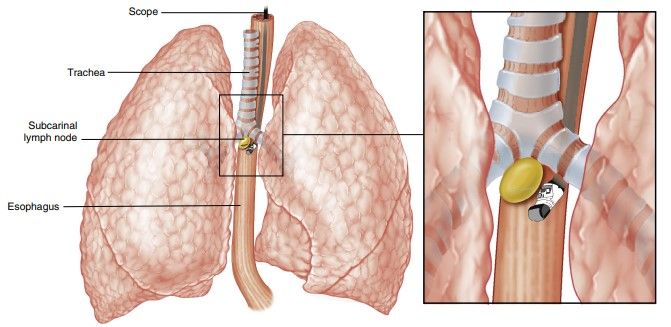
EUS and EBUS: Enhancing Non–Small Cell Lung Cancer Staging
This article explored the critical role of Endoscopic Ultrasonography (EUS) and Endobronchial Ultrasound-guided Transbronchial Needle Aspiration (EBUS-TBNA) in the diagnosis and staging of non–small cell lung cancer (NSCLC), emphasizing their combined effectiveness in improving patient outcomes.
The Significance of EUS and EBUS in NSCLC
Endoscopic ultrasonography (EUS) and EBUS-TBNA have emerged as the techniques of choice for mediastinal nodal sampling in non–small cell lung cancer staging. Their precise diagnostic capabilities allow for accurate staging and assessment, significantly impacting treatment planning and prognosis.
Combined Endosonographic Nodal Staging
The integration of EUS and EBUS provides a comprehensive view of the mediastinal nodes, surpassing the diagnostic accuracy of either technique used individually. This combined approach enhances nodal staging, crucial for determining the appropriate treatment path for NSCLC patients.
Advancements in Lung Cancer Staging
Incorporating endosonography into the lung cancer staging algorithm has led to significant improvements in locoregional staging accuracy. It not only reduces the need for more invasive procedures like mediastinoscopies but also minimizes unnecessary thoracotomies, offering a cost-effective solution for patient care.

EUS Performed with the EBUS Scope
The use of an EBUS scope for EUS (EUS-B) procedures has shown to be comparably effective to conventional EUS for mediastinal nodal staging. This versatility further underscores the utility of endosonographic techniques in lung cancer care.


Diagnosing Intrapulmonary Tumors
EUS and EBUS are not only limited to nodal staging but can also diagnose intrapulmonary tumors, especially those adjacent to the esophagus and major airways. This capability extends the applicability of endosonography in lung cancer diagnosis and treatment.
The Impact on Lung Cancer Care
The integration of EUS and EBUS into NSCLC staging represents a paradigm shift in lung cancer diagnosis and management. These techniques have streamlined the staging process, enhanced diagnostic accuracy, and improved the overall efficiency of lung cancer care.
Conclusion
EUS and EBUS have significantly advanced the staging and diagnosis of non–small cell lung cancer. By offering a less invasive, highly accurate, and cost-effective approach, these endosonographic techniques have become indispensable in the fight against lung cancer, paving the way for tailored treatments and improved patient outcomes.
Disclaimer: This content is for educational purposes only and should not be considered a substitute for professional medical advice. Always consult a healthcare provider for accurate diagnosis and treatment.
Contact Us for More Information
Explore Our Lung Cancer Staging Services
